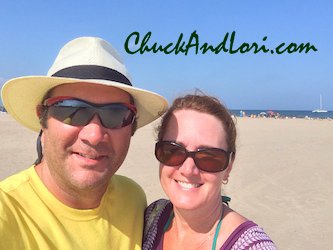Above: The USS West Virginia During the Pearl Harbor Attack
Every year on December 7th, the anniversary of the attack on Pearl Harbor that finally brought the United States into World War II, I think of a man we once crossed paths with in our travels. We spent only an hour or so with him, but that hour was one of the most memorable hours of my life.
It was the summer of 2000 and we were vacationing in Hawaii. Our first few days were on the island of Oahu, as they are for most visiting from the mainland. We had lounged on Waikiki beach and had breakfast at Dukes (on a Sunday, no less, for you Jimmy Buffett fans). One day, before we jetted off to Kona, we went to see the Pearl Harbor Memorial.
It’s a somber site. From the boat ride to the memorial, during the visit, and through the return ride, few people talk. You are politely reminded that this isn’t just a memorial but a gravesite. American sailors died on that spot and they still rest within the USS Arizona just below the surface.
That sobering mood sticks with you for a while, even as you tour the exhibits after your return. We were milling around the courtyard when I saw an older man wearing a veterans cap and a Hawaiian shirt sitting by himself on a bench. In his lap he held a book. I smiled politely at him when he looked my way.
“Would you like to look at my scrapbook?” he asked. Though I’m now certain he had shown his book to thousands of people before me, I can only describe the way he asked me if I’d like to look as hopeful, as if him showing me his book was the only thing that really mattered to him that day.
He introduced himself as Dick Fiske. He was the Bugler on the USS West Virginia the morning of the attack on Pearl Harbor. The “Wee-Vee”, as it was nicknamed, was positioned behind the Arizona and was one of the four battleships sunk during the attack. Fiske’s job was to stand next to the captain and relay his orders by bugle over the din of the attack; the captain was shot by a strafing Japanese fighter-bomber and died along with more than 100 sailors when the Wee-Vee sank in 40 feet of water. Fiske swam ashore to Ford Island when the call was made to abandon ship.
His role at Pearl Harbor was enough to make him a hero, but serving out his Navy enlistment before the war was over, he reenlisted in the Marine Corps. He participated in the battle for Iwo Jima, a brutal and hellish battle that lasted more than a month and left nearly 7,000 Americans dead.
Still, only a portion of his scrapbook was dedicated to his wartime efforts. That sort of modesty seems a common trait among true heroes. There were pictures of Fiske as a young American sailor and a young American marine, but the majority of his scrapbook was instead dedicated to what he achieved in the decades after the war.
Richard Fiske, more than practically any man, had good reason to hate. He had witnessed more death and wartime atrocities than is conceivable. But after the war he set out to do something totally remarkable and amazing. He set out to forgive. His scrapbook was filled with pictures and mementos of his visits to Japan and friends he had made with former Japanese soldiers and pilots, including one Zenji Abe who participated in the Pearl Harbor attacks. “He might have killed my captain, I don’t know,” Fiske admitted to me, Lori, Susan and Randy as we were all mesmerized by his stories…not of war but of reconciliation.
The world needs a lot more heroes like Disk Fiske.
Fiske died April 2nd, 2004, and is buried on Oahu. We were so fortunate to have met him when we did. When we return to Hawaii, whenever that might be, we’ll gladly pay our respects to this American hero who touched so many lives with a scrapbook of forgiveness.

Dick Fiske and his Scrapbook






